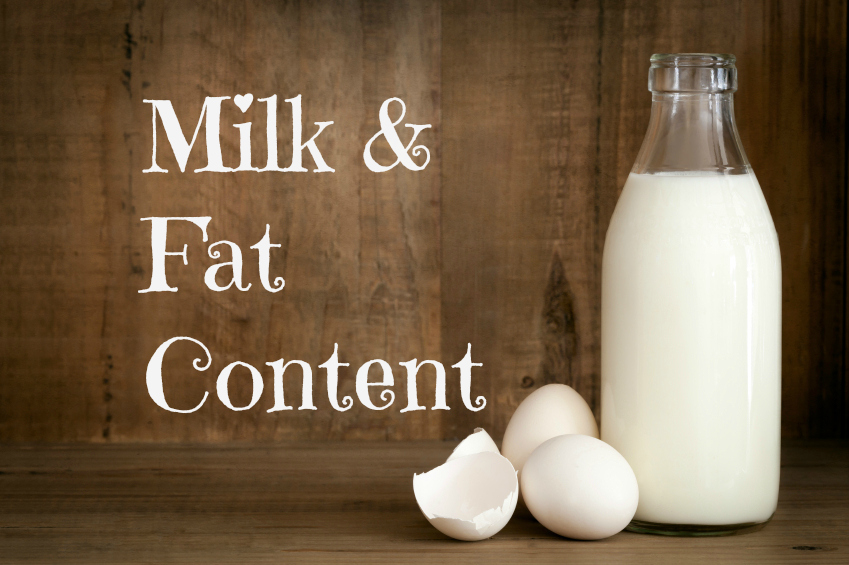Milk and the Differences in Fat Content

Milk that has no fat is also called skimmed, fat-free, non-fat or 0 percent fat. The USDA National Nutrient Database uses the terms nonfat, fat-free and skim as descriptors for milk with no fat. The fat content of the milk refers to the percentage of weight that the fat contributes to the serving size. It does not refer to the percent of calories the fat contributes. Each 8-ounce cup of milk, no matter how much fat, will have 12 grams of carbohydrate as milk sugar.
Milk sugar is also called lactose. Each 8-ounce cup of milk will also have 8 grams of protein. An 8-ounce cup of skim milk has 80 calories. Milk with 1 percent fat is also referred to as low-fat milk and has 100 calories and 2 grams fat. Milk with 2 percent fat is also referred to reduce- fat milk and has 120 calories and 5 grams fat. Whole milk is also called vitamin D milk and has 150 calories and 8 grams fat.
Most of the fat in milk is saturated, which can contribute to elevated cholesterol. Increased fat also means increased calories and a potential for dumping issues. Along with protein, milk also packs in calcium, potassium and water. There are several lactose free milks on the market if you are lactose intolerant. For those that enjoy milk, you are getting a nutrition-packed fluid. Next week’s tip will be an overview of the other milks on the market like almond and cashew milks. Stay tuned!



OKCPirate 5,323
Posted
Nice to see another Oklahoman on the board. Does yogurt count?
Share this comment
Link to comment
Share on other sites